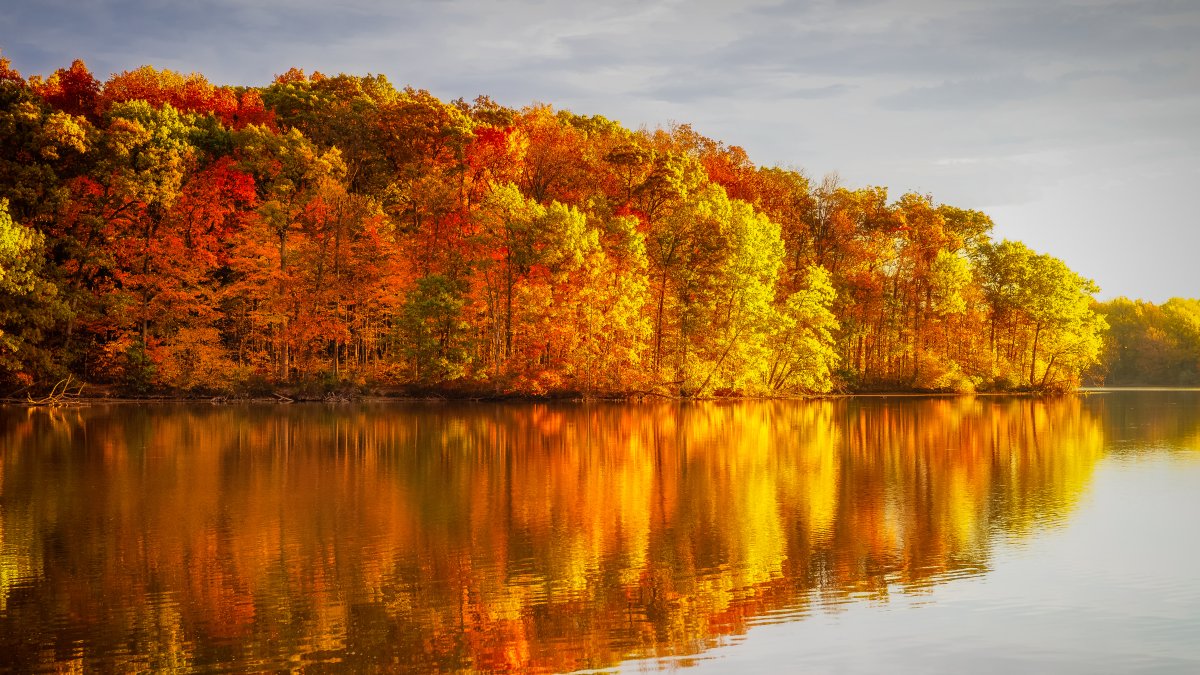The Chicago area will get a taste of fall weather in the coming days and it will likely have many gearing up for the start of the new season and everything that comes with it: changing leaves, pumpkin spice, sweater weather and more.
While some leaves may already show signs of changing, when can you expect the height of fall foliage?
“We still have a little ways to go,” said NBC 5 Storm Team Meteorologist Kevin Jeanes.
Here’s a timeline and what to watch for in the weather to know just how vibrant the fall colors could be:
End of September
According to Jeanes, leaves will first start to change in northern Wisconsin around Sept. 15.
“The colors start to change at least farther north across Wisconsin as we get to the final about week and a half of September,” he said. “Low colors changing there.”
Mid-October
Once October arrives, colors are expected to begin changing across much of the Midwest.
“That’s really the month that we’re talking about whenever the leaves begin to change color around here,” Jeanes said.
By Oct. 15, noticeable changes are expected in the Chicago area.
According to Illinois’ “fall colors trip planner,” estimated peak times for leaves from Galena, through the Chicago area and down to Starved Rock are the second week of October.
The Farmers Almanac expects peak color for northern Illinois to fall somewhere between Oct. 5 and 21.
Late-October
Peak colors typically continue in the Chicago area and Illinois through late-October.
“The last week to week-and-a-half of October, Jeanes said.
For central Illinois, that is the estimated peak time, according to Enjoy Illinois.
November
By the time November arrives, fall leaves are expected to be past their peak.
“Once we get into November, that’s when we’re past the peak and the leaves start to drop off then,” Jeanes said.
What could change this timing?
There are some factors that can change just how colorful the leaves turn and how long they last.
Already, trees that are popular in landscaped areas are starting to show the first bits of color, Christy Rollinson, forest ecologist at The Morton Arboretum, told Telemundo Chicago.
Trees usually start changing as the days continue to get colder and nighttime temperatures get consistently quite cold – into the low 40s, 30s or even lower, Rollinson explained.
While an early peak fall color season isn’t expected, Rollinson noted the possibilities.
“Things can change very quickly as we progress into September and October,” she said. “When what happens day to day really has a strong influence on the process of trees changing color and preparing for winter.”
The past month and much of the growing season have been pretty moderate for trees although the extreme heat from the end of August may have caused increased stress, she said. However, that might not have much of an impact.
Jeanes said that overall, a hot and dry summer can dampen the brightness of leaf colors, but the Chicago area saw a relatively average summer when it came to rain, meaning the region is expected to see a moderate color change this season.
While there have been recent periods of extreme heat and temperature drops in store for the area in the days ahead, that may not have as much of an impact as you might expect.
Morton Arboretum and its research partners found trees really respond to extreme weather conditions over longer time periods — several weeks or more — compared to short-lived heat waves or dry spells.
“Trees are really well equipped to hang in there and play the long-game,” Rollinson said.
Why do tree leaves change color?
While it appears peak colors won’t emerge for several weeks, you might be wondering what causes trees to change color in the first place — or what causes the vibrant hues.
Trees with leaves that change colors are green most of the year because of the chlorophyll they use to absorb energy from sunlight during photosynthesis, according to the an article by the Smithsonian Institute.
But when temperatures drop and days get shorter, trees get less direct sunlight, and the chlorophyll in the leaves breaks down.
“How much and how fast leaves transform varies by location on the globe,” the article explained. “The best colors are produced when the weather is dry, sunny and cool. Places that are cloudy, damp or warm won’t see the same degree of changing color.”
